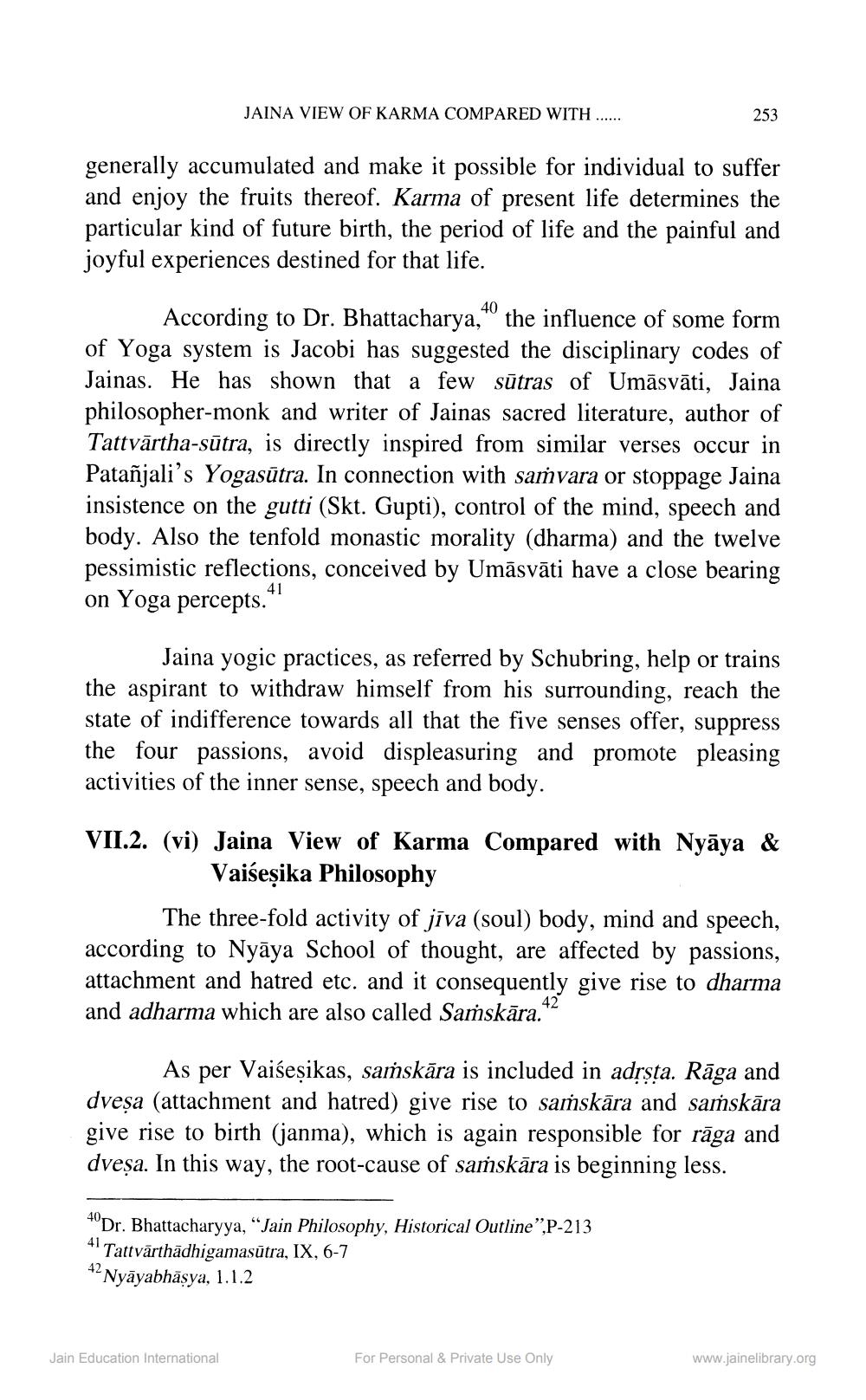________________
JAINA VIEW OF KARMA COMPARED WITH
253
generally accumulated and make it possible for individual to suffer and enjoy the fruits thereof. Karma of present life determines the particular kind of future birth, the period of life and the painful and joyful experiences destined for that life.
According to Dr. Bhattacharya,40 the influence of some form of Yoga system is Jacobi has suggested the disciplinary codes of Jainas. He has shown that a few sūtras of Umāsvāti, Jaina philosopher-monk and writer of Jainas sacred literature, author of Tattvārtha-sūtra, is directly inspired from similar verses occur in Patañjali's Yogasūtra. In connection with samvara or stoppage Jaina insistence on the gutti (Skt. Gupti), control of the mind, speech and body. Also the tenfold monastic morality (dharma) and the twelve pessimistic reflections, conceived by Umāsvāti have a close bearing on Yoga percepts.'
Jaina yogic practices, as referred by Schubring, help or trains the aspirant to withdraw himself from his surrounding, reach the state of indifference towards all that the five senses offer, suppress the four passions, avoid displeasuring and promote pleasing activities of the inner sense, speech and body.
VII.2. (vi) Jaina View of Karma Compared with Nyāya &
Vaiseșika Philosophy
The three-fold activity of jīva (soul) body, mind and speech, according to Nyāya School of thought, are affected by passions, attachment and hatred etc. and it consequently give rise to dharma and adharma which are also called Saṁskāra.“
As per Vaišeșikas, saṁskāra is included in adrsta. Rāga and dveșa (attachment and hatred) give rise to saṁskāra and saṁskāra give rise to birth (janma), which is again responsible for rāga and dveșa. In this way, the root-cause of saṁskāra is beginning less.
*"Dr. Bhattacharyya, “Jain Philosophy, Historical Outline”.P-213 4 Tattvārthādhigamasutra, IX, 6-7 42 Nyāyabhāsya, 1.1.2
Jain Education International
For Personal & Private Use Only
www.jainelibrary.org




